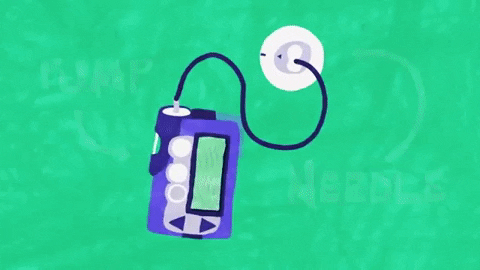How does the body react to foreign objects?
Let's go straight to the example An automatic insulin pump is a device that helps improve the lives of diabetics by monitoring blood sugar, giving insulin when needed, avoiding the need for frequent blood sampling. This device consists of a pump and a sensor-integrated needle used to measure and transmit insulin. However, the problem is that within a few days, the blood glucose sensor must be repositioned and replaced.

Not only does the blood glucose monitor have this problem, but all implants need to be replaced at different intervals such as: Plastic prostheses must be replaced after about 20 years, objects Implants used in plastic surgery also suffer the same fate after about 10 years.
How does the body react to foreign objects?
This is not only annoying, costly, and dangerous. The reason is due to the mechanism of the immune system in our body . Over hundreds of millions of years of evolution, these defensive frontiers have become extremely adept at detecting foreign bodies. Our immune system possesses a vast arsenal of weapons to capture, block, and destroy things they believe to enter our bodies illegally. But the disadvantage of this barrier is that they consider both useful implants such as insulin pumps as dangerous as bacteria or viruses.

As soon as the insulin pump is implanted in the skin, the body immediately activates foreign body recognition and provides coping methods. Start with free proteins adhering to the surface of the implant. These proteins include antibodies that try to neutralize foreign objects and send signals to call other immune cells to increase their attack.

In response to the urgent call, the second attack was an army of white blood cells and macrophages. Leukocytes release enzymes containing small particles that try to destroy the surface of an insulin syringe. Macrophages also release enzymes along with nitric oxide-based substances that help create a chemical reaction that degrades an object over time. If macrophages cannot resolve foreign matter quickly, they merge together into a giant cell mass.

At the same time, the fibroblasts move to that point and begin to accumulate dense layers of connective tissue. They wrap the needle, over time surrounded, the implant gradually forms a scar. The function of the scar mass is an inviolable wall that prevents the interaction between the body and the implant.

The scar mass around the pacemaker interferes with the electrical current and disables the device's function. The artificial knee joint sloughs off small pieces when worn down, causing anti-inflammatory immune cells to gather around these pieces, causing joint stiffness. Worse, an attack of the immune system can be shocking, even life-threatening.

How to bypass the immune system
Currently, researchers are looking for ways to bypass the immune system by covering implants with chemicals and pharmaceuticals approved by the immune system. In addition, new methods such as using more natural implants, similar in structure to tissues are also being tested and applied.

In the future, the research of the immune system will help us develop superior artificial organs, suitable organ transplants to heal injuries quickly.
- Why do we "close our eyes" when we sneeze?
- Decipher the mystery of allergy and anaphylaxis: What has brought down the whole body in just a few minutes?
- Strange objects fell in Tuyen Quang and Yen Bai
- Foreign body in the moon landings?
- Micro robot takes an object that you swallow
- Use a robot to remove objects in the stomach
- Foreign newspapers write about strange objects 'billions of money' in the belly of a pig
- Video: Strange objects in the American sky
- The 250,000-year-old aluminum object suspected of a UFO debris
- Revealing shock about the plan
- Great benefit of knowing foreign languages
- Strange object rushing towards Earth, will appear as '2nd Moon'
- He declassified documents about UFOs
- The woman suddenly said a foreign voice after pulling out her teeth
 'Fine laughs' - Scary and painful torture in ancient times
'Fine laughs' - Scary and painful torture in ancient times The sequence of numbers 142857 of the Egyptian pyramids is known as the strangest number in the world - Why?
The sequence of numbers 142857 of the Egyptian pyramids is known as the strangest number in the world - Why? History of the iron
History of the iron What is alum?
What is alum?